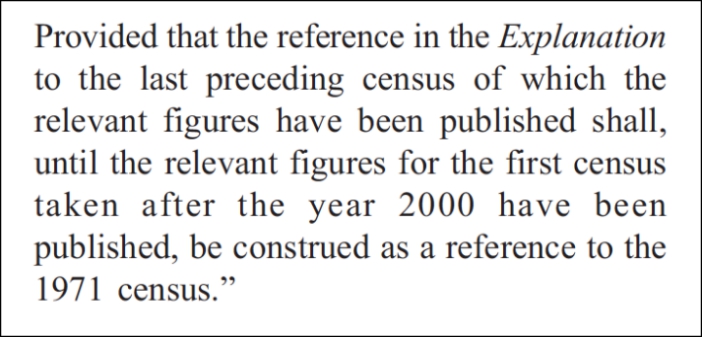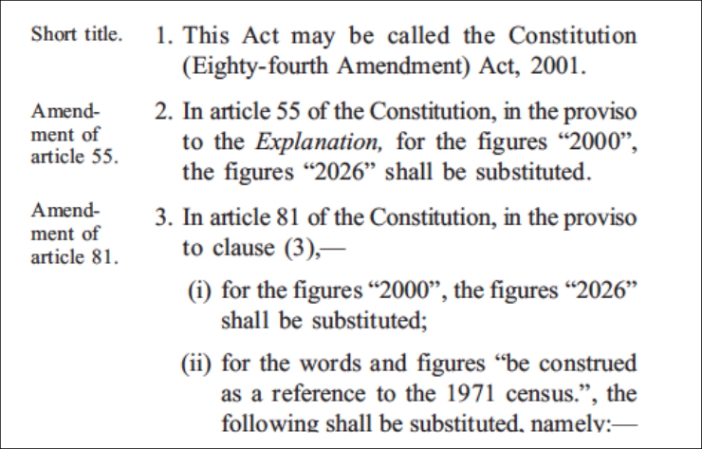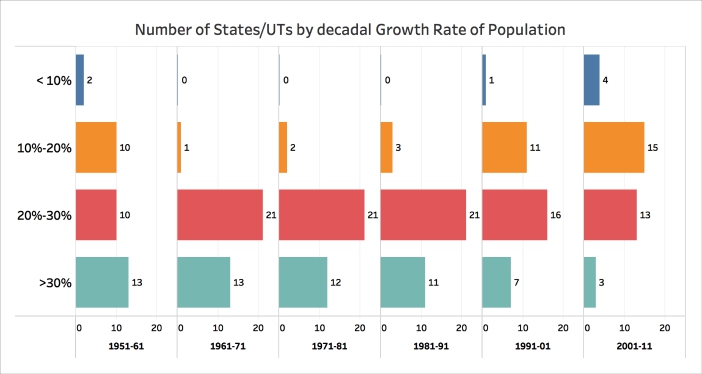[orc]The notification for the 15th Presidential election is out. We still calculate the value of the vote of a MP/MLA for the Presidential election based on the 1971 Census figures. What explains our obsession with the 1971 Census?
Whether it is to calculate the value of the MP’s or a MLA’s vote for the Presidential election or allocation of the number of Lok Sabha seats to each state or the total number of Assembly seats in a state, it is the population of states as per 1971 Census that is taken into consideration. But why is the 1971 Census the basis for all such calculations especially when we had four more Censuses after 1971? Here is the explanation for our obsession with the 1971 Census.
Census & Allotment of Seats
As per provisions in articles 55, 82, 170 and 330 of the constitution, the determination of value of votes for the Presidential election, readjustment of seats in the Lok Sabha or a State assembly are to be done based on the population figures after each Census. Hence Census figures become very important.
The history goes back to the 42nd Amendment
The 42nd amendment to the Constitution, more popularly known as the ‘Mini-Constitution’ made widespread changes to the constitution during emergency days in 1976. ‘Population control and family planning’ was included in the concurrent list with this amendment. The government of the day was keen on promoting family planning and to control population growth.
Hence provisions were included in articles 55, 82, 170 and 330 of the constitution not to make any changes to the number of Lok Sabha seats, Assembly seats etc. until the figures from the first Census after the year 2000 have been published. This was done as a measure to boost family planning norms. In other words, any readjustment to the total number of seats had to take place only after the year 2000 when the 2001 Census figures would be published.
The NDA government extended this to 2026
The NDA government in the year 2001 felt the need to amend the provisions included through the 42nd amendment since the 2001 Census figures were about to be published. The statement of objects to the 84th amendment to the constitution in 2001 mentions that there have been consistent demands, both for and against undertaking the exercise of readjustment. It further says that considering the progress of family planning programs in different parts of the country, and as per the National Population Policy strategy, it was decided to extend the freeze on readjustment up to the year 2026. The government saw it as a motivational measure to encourage State Governments to pursue the agenda for population stabilization. Thus the embargo on any readjustment to the total number of seats was extended to 2026, meaning that any such readjustment can only be done after the 2031 Census. While readjustment or changing the number of seats is to be done only after 2026, the 84th amendment allowed delimitation (process of fixing limits or boundaries of territorial constituencies) or changing the reservation status of the constituencies after the 2001 Census. This was to be done without altering the total number of seats in a state.
While readjustment or changing the number of seats is to be done only after 2026, the 84th amendment allowed delimitation (process of fixing limits or boundaries of territorial constituencies) or changing the reservation status of the constituencies after the 2001 Census. This was to be done without altering the total number of seats in a state.
Is population growth uneven?
One of the prime reasons to freeze the readjustment of Lok Sabha/Assembly seats was to ensure uniform population growth in various states. If readjustment had to be done after each Census, states that have controlled population growth would have lost out on the number of Lok Sabha seats & also on the value of its votes in the Presidential election while the ones that did not control stand to benefit.
Even till 2001, most states had a decadal population growth rate between 20% & 30%. For the first time between 2001 & 2011, most states had a decadal growth rate between 10% & 20%. The number states growing over 30% has come down from 11 between 1981-91 to 3 between 2001-11.
While northern states like Bihar, Jharkhand, Rajasthan, Madhya Pradesh & Uttar Pradesh had a decadal growth rate over 20% in the 2001-11 period, southern states like Andhra Pradesh, Telangana, Kerala, Karnataka & Tamil Nadu grew at less than 16% in the 2001-11 period. Kerala in fact had the lowest growth rate of 4.9% in the 2001-11 period, which is 1/5th of Bihar’s growth rate. If the readjustment was done after every Census, the southern states would have lost out on the total Lok Sabha seats for doing better on population control while the northern states would have benefitted for not controlling population.
While freezing the readjustment till 2026 makes sense because of such uneven growth rates, it remains to be seen how the problem will be solved even after 2026, since the growth rates may not even out in the near future.
Featured Image: 1971 Census



1 Comment
Thanks for that.. really wonderful explanation. I sincerely hope we get to read more such informative pieces. Please keep up the good work!